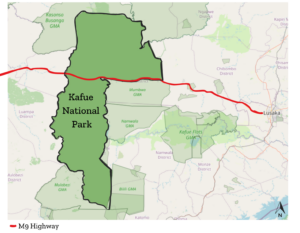
At the heart of the Greater Kafue Ecosystem in Western Zambia is the 22,000-square-kilometer Kafue National Park. This is Zambia’s oldest and largest park, at twice the size of Yellowstone National Park in the USA. Kafue is home to a wide range of iconic wildlife, including elephants, lions, leopards, cheetahs, wild dogs, and Africa’s most diverse antelope community.
This protected area faces many significant threats, but most concerning is the M9—a high-speed highway that bisects or borders 143 kilometers of the park and adjacent Mumbwa Game Management Area. The M9 is notorious for wildlife-vehicle collisions, including the death of 11 endangered African wild dogs to vehicle collisions in 2022. But the Center for Large Landscape Conservation is working to change this with a newly launched project.
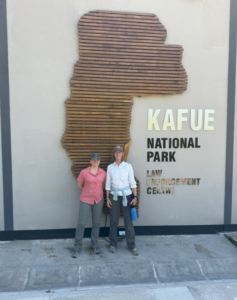
Roads are lifelines of modern civilization, facilitating transportation and economic development. However, their construction and expansion can have profound consequences on wildlife and ecosystems. As asphalt ribbons weave through landscapes, they fragment habitats, disrupt migration routes, and increase the risk of wildlife-vehicle collisions. While these impacts are concerning for all species, they are particularly dire for endangered species of wildlife. When these imperiled creatures reside near roads, minimizing road impacts becomes not just a conservation goal, but a critical imperative for safeguarding their survival.
In April 2024, Megan Parker and Melissa Butynski from the Center for Large Landscape Conservation traveled to Zambia to launch the project ‘A Road Runs Through It.’ It is a new collaborative effort between the Center for Large Landscape Conservation, Zambian Carnivore Programme (ZCP), and Greater Kafue Landscape Ltd., a joint venture of Zambia’s Department of National Parks and Wildlife (DWNP) and African Parks (AP).
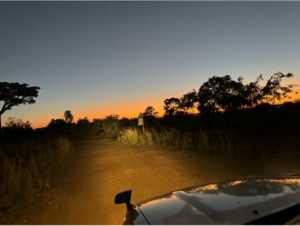
The project aims to quantify the impact that the M9 is having on wildlife populations in Kafue, and assess and recommend mitigation options to reduce the negative impact of the M9 Highway on wildlife in Zambia’s Kafue National Park and Greater Kafue Ecosystem.
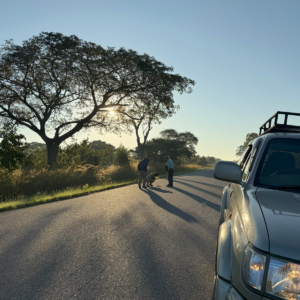
Once on the ground, Megan and Melissa met with the ZCP team at their camp to finalize the protocol for a systematic roadkill data collection effort which will take place over the next year. The ZCP camp is nestled along the banks of the Kafue River, surrounded by trees and looking out into the vast savannah.
Up before dawn, the team piled into the car to make their way to the starting point for the first test of the M9 survey protocol. The team was joined by a very special guest, Dr. Vincent Nyirenda of Copperbelt University. Dr. Nyirenda has conducted a previous survey on road kills of wild vertebrates in Kafue National Park between January 2008 and December 2012, and thus has invaluable insight.
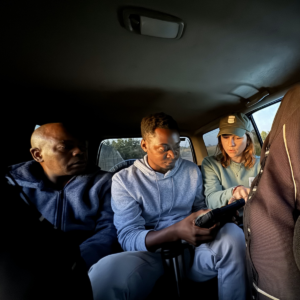
During the next few hours, the team drove along at a steady 30-40 kilometers per hour as observers searched for live animals within 50 meters of the roads edge, as well as roadkill. When a carcass is detected, the location, species, age class and gender are recorded, along with the characteristics of the kill site. These include status of the roadside vegetation, evidence of fire, habitat, nearby attractants such as green grass or human garbage, and presence of scavengers.
The team saw a variety of roadkill during this first survey, including eight nightjars, two small owls, a bushbaby, a snake, and two hares. The team discussed and refined the protocol throughout this process alongside Luckson Banda of the ZCP, who will lead the systematic roadkill survey effort.
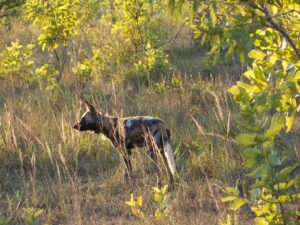
Driving along the M9 after months of building the project concept back at the Center’s offices in Montana was a surreal and rewarding moment for both Megan and Melissa. With incredible on-the-ground partners and the urgent need for solutions evident with every roadkill sighting, the team at the Center is excited to kick this project off with the goal of making the M9 safer for both people and wildlife.
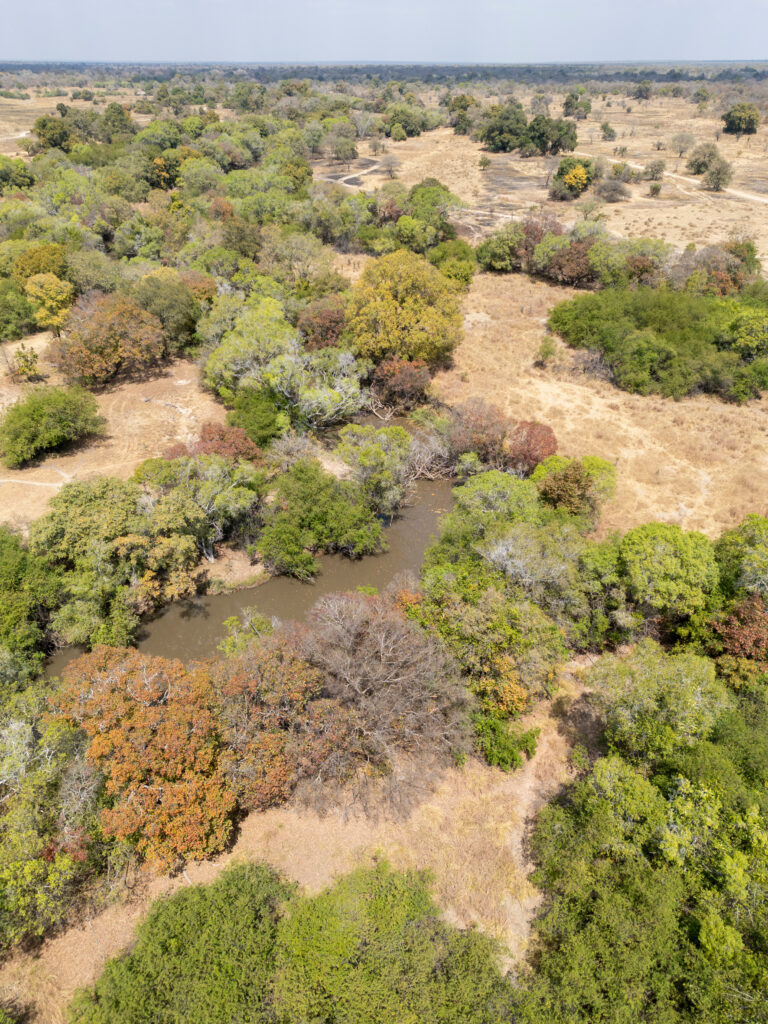
Photo, top: Young male lion in Kafue National Park. Credit: Adobe Stock



